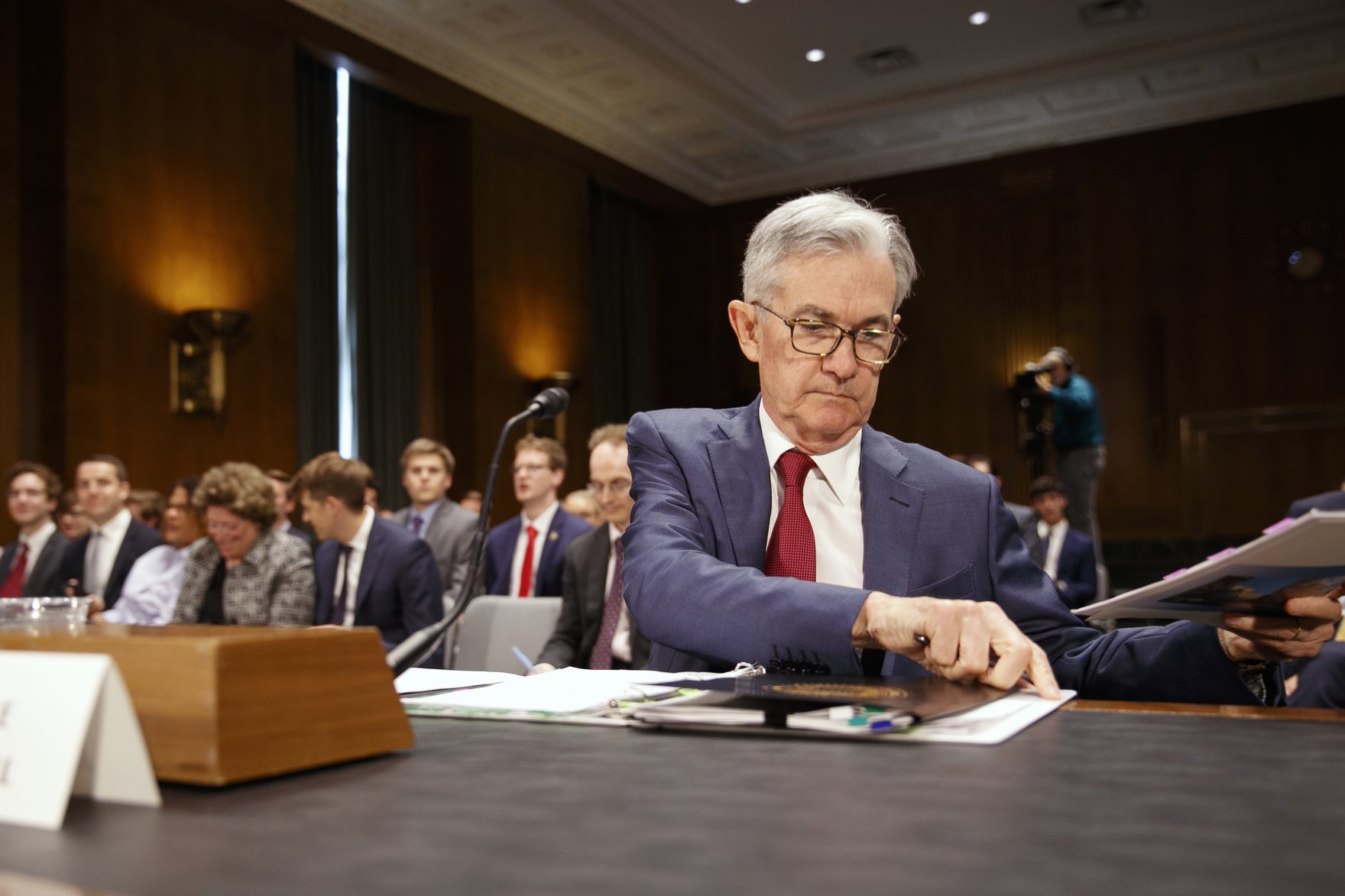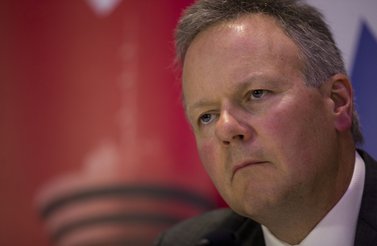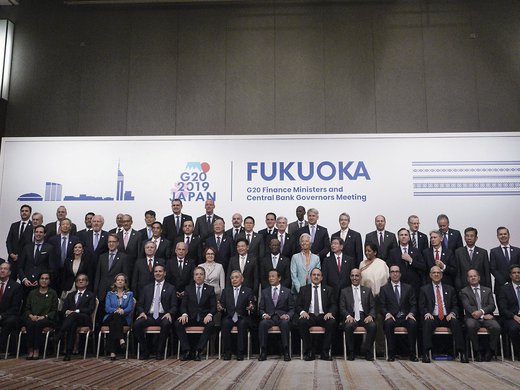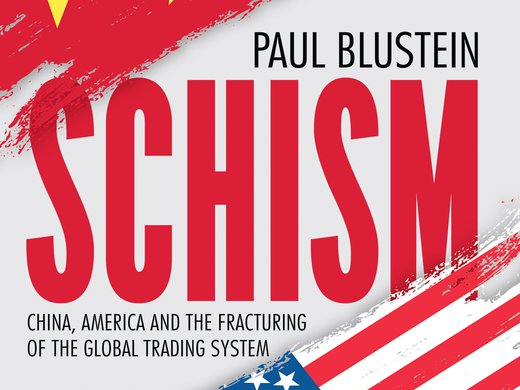This is a massive week for monetary policy.
On July 31, the United States Federal Reserve will cut interest rates for the first time since the 2008 financial crisis. The event has been highly anticipated, even though almost everyone on Wall Street thinks they already know what the outcome will be.
What they don’t know is how Jerome Powell, the Fed’s chairman, will justify stimulus at a time when the economy appears to be doing just fine. The Commerce Department’s initial estimate of economic growth in the second quarter was an annual rate of 2.1 percent, slower than the previous quarter, but faster than the Fed’s estimate of the economy’s non-inflationary speed limit. The widespread expectation that the Fed will lower borrowing costs is accompanied by frustration over how little data there is to support new stimulus.
“Manufacturing sentiment has unwound last month’s slide,” economists at RBC Capital Markets wrote in a note to clients on July 18, when data showed that manufacturing in the region around Philadelphia rebounded sharply in June. “Retail sales suggests the consumer is chugging along and job growth is humming. If we recall, weren’t these the factors that comprised the rationale for why we needed cuts? We will say again that the virtually inevitable July cut is severely lacking in justification.”
There will be supporting acts surrounding the main event. The Bank of Japan’s Policy Board met July 29 and 30. Brazil’s central bankers are widely expected to lower borrowing costs on July 31, according to Bloomberg News. Turkey’s new central bank chief, Murat Uysal, will also make his first public appearance that day. President Recep Tayyip Erdogan fired Uysal’s predecessor, Murat Cetinkaya, on July 6, because Cetinkaya wouldn’t cut borrowing costs. Uysal slashed the benchmark rate by 4.25 percentage points on July 25, the biggest cut on record.
Finally, the Bank of England takes the stage on August 1. It merely has to contend with the prospect of a hard Brexit. The United Kingdom’s Office for Budget Responsibility said earlier this month that a decision to leave the European Union without a trade deal in place would trigger a year-long downturn during which GDP would decline by two percent.
These other events are important because central banks around the world are cutting interest rates this summer to a degree unseen since the financial crisis. Earlier this month, the International Monetary Fund cut its outlook for global economic growth this year to 3.2 percent, which would be a significant drop from 3.6 percent in 2018. “Global growth is sluggish and precarious,” Gita Gopinath, the fund’s chief economist, said in a blog post on July 23, citing the trade wars, the Trump administration’s sanctions against Chinese technology companies and the heightened possibility that the United Kingdom will leave the European Union without a trade agreement in place. “With global growth subdued and downside risks dominating the outlook, the global economy remains at a delicate juncture,” she added.
Enter the Fed and its chairman, Jerome Powell.
There will be a lot to watch this week, but the US central bank will attract most of the attention. The press conference that follows the FOMC’s interest rate announcement will be Powell’s most important public appearance of his tenure so far.
On August 2, the Bureau of Labor Statistics will release US hiring data that will likely show the jobless rate was around 3.7 percent this month, the lowest in almost five decades. Powell will need a convincing explanation for why an economy that appears to have achieved the Fed’s goal of “maximum employment” requires more stimulus. Many observers assume that Powell has finally succumbed to President Donald Trump’s constant badgering of the Fed to cut interest rates. The chair has said often that he is unaffected by Trump’s pressure. Maybe they’re cynical, but some don’t believe him.
“It is no secret that Trump regards the stock market’s performance as an indicator of his own performance. But it has been surprising to see the Fed join the rate-cutting bandwagon,” Robert J. Barro, an economics professor at Harvard University, wrote in an op-ed for Project Syndicate on July 23. “My view is that the shift in 2019 away from normalization is primarily due to the intense opposition to further rate increases last December, when the loudest objections came, notably, from stock-market analysts and the Trump administration.”
Gopinath said monetary policy should remain supportive of growth, “especially where inflation is softening below target.” That would include the United States, where prices remain subdued, despite the low unemployment rate. The Fed raised its benchmark interest rate four times in 2018, and financial markets reacted poorly to the final raise in December. BlackRock, the world’s biggest manager of financial assets, keeps an eye on an index of financial conditions in the United States, the euro zone and Japan. The index dropped sharply over the second half of last year, pulling economic growth in those three places down with it. The index began to recover when Powell and other Fed officials began signalling that they were considering reversing course.
“It now appears that the Fed regrets the last two rate hikes in 2018 and is looking for any signs of economic weakness to provide cover for rate cuts,” Joseph E. Gagnon, a senior fellow at the Peterson Institute for International Economics and a former economist at the Federal Reserve Board, wrote in a blog post on June 20. “The Fed does not want to acknowledge this change of heart, especially in light of President Donald Trump’s public criticism of its policy stance. But it probably would be making the same decision even without Trump.”
There is a chicken-and-egg element to the consensus that lower interest rates are coming. The US stock market’s plunge in December coincided directly with the Fed’s pivot. Yet, many Wall Street analysts are basing their forecasts of a cut not so much on economic conditions, but more on the commentary of Fed officials.
On July 26, Deutsche Bank’s US economics team published for its clients six reasons why the Fed likely will lower the benchmark rate by a quarter point, rather than a half point, as some forecasters predict.
First reason: “Fedspeak indicates that [a 25-basis-point cut] is more likely.”
Some of Deutsche’s other reasons could be mistaken as arguments to leave borrowing costs unchanged: “data have been mixed, but do not indicate an imminent sharp slowdown”; financial conditions “remain very easy”; given the uncertainty around the US trade war with China and the potential fallout from Brexit, it makes sense to move slowly and “save ammunition if risks do in fact materialize”; a half-point cut would be “bad optics,” as it could be construed as succumbing to Trump.
There is an uncynical way to look at the shift in the Fed’s thinking. For years, the US central bank was accused of ignoring its outsized role in the global economy, worrying only about its domestic objectives. The Group of Twenty said its central banks would do a better job of talking to each other after Ben Bernanke, the Fed chairman from 2006 to 2014, abruptly signalled in 2013 that he planned to start unwinding post-crisis stimulus. The “Taper Tantrum” caused interest rates to spike, roiling financial markets around the world.
By signalling the Fed’s intent to cut interest rates, Powell has helped emerging markets, which were feeling the strain of tougher financial conditions and weaker demand for exports because of the trade wars. It could be a recognition that the United States will be hurt by a weaker global economy, even though things at home appear fine. That would be a positive development for global economic stability.
Powell will struggle to convince many observers of that, however. He is well-liked. But he was destined to run US monetary policy with a cloud over his head. His predecessor, Janet Yellen, deserved to keep the job because she excelled in the role and the convention was to extend sitting Fed chairs if they desired to stay on. Trump broke with tradition because he wanted his own person in the job; “you want to make your own mark,” he said. Until he proves otherwise, Powell is Trump’s man, whether he likes it or not.
“I would expect Powell to signal…that ‘risk management’ requires another 25 [basis points] before year end,” Phil Suttle, an independent economist who has worked at the Bank of England and the New York Fed, advised his clients in an email on July 26. The risk Powell will be managing, Suttle said, will be “the risk of him being fired.”





